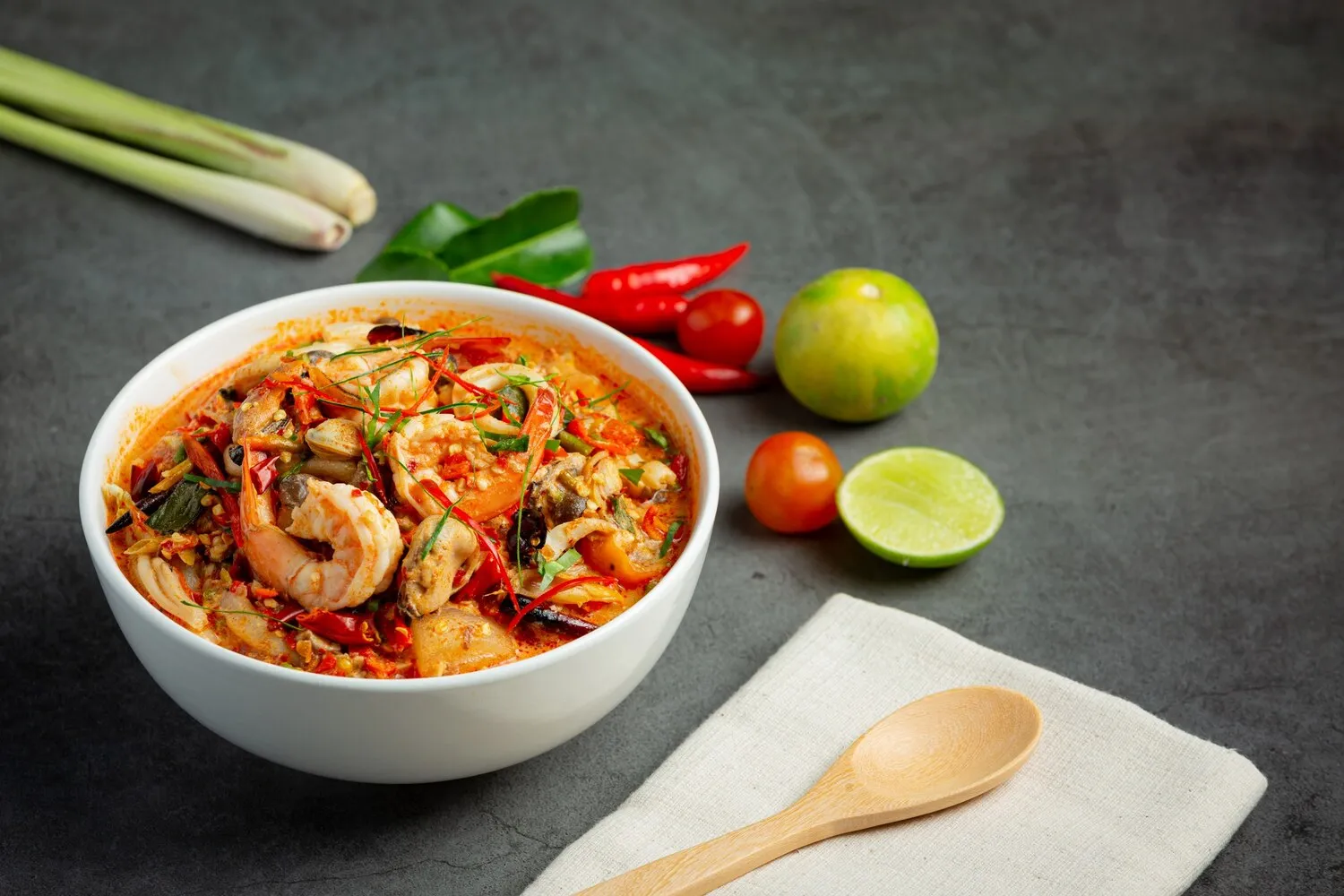
Phở
Classic Vietnamese noodle soup with beef or chicken.
Nutrition Facts
* The % Daily Value (DV) tells you how much a nutrient in a serving of food contributes to a daily diet. 2,000 calories a day is used for general nutrition advice.
Phở's origins are debated, but most believe it emerged in the late 19th or early 20th century in northern Vietnam, possibly influenced by French colonialism and the demand for affordable, nourishing food for Vietnamese workers. The name 'phở' itself is believed to be derived from the French 'pot-au-feu'. It gained popularity in Hanoi before spreading throughout the country.
Phở is more than just a meal in Vietnam; it is a national dish and a symbol of Vietnamese culture and identity. It is enjoyed throughout the day, from breakfast to late-night snacks, and is often associated with family gatherings and celebrations.
National Dish
Phở is considered Vietnam's national dish and represents the country's culinary heritage.
Everyday Staple
It's a popular and affordable meal enjoyed by people from all walks of life, at any time of day.
Family Tradition
Phở is often prepared at home, passed down through generations, with each family having their own unique recipe and variations.
Community and Social Connection
Eating phở is often a social experience, enjoyed with friends and family in bustling restaurants or street-side vendors.
Phở is characterized by its aromatic, savory broth, tender rice noodles, and flavorful meat, typically beef or chicken, enhanced by fresh herbs and seasonings.
The broth, the heart of phở, is traditionally made by simmering beef bones (for phở bò) or chicken bones (for phở gà) for hours, often with charred onions, ginger, and a blend of spices like star anise, cloves, cinnamon, and coriander seeds. These spices impart a complex, warming aroma and flavor. The rice noodles (bánh phở) are flat and wide, offering a satisfying texture. Sliced beef (rare or cooked) or shredded chicken provides the protein. Common toppings include fresh herbs like cilantro, Thai basil, and scallions, along with bean sprouts, lime wedges, chili peppers, and hoisin and sriracha sauce for personal customization.
Broth is Key
The quality of the broth is paramount. Look for a clear, flavorful broth with a rich, aromatic scent. Avoid broths that are cloudy or taste artificial.
Customize Your Bowl
Don't be afraid to experiment with different toppings and sauces to find your preferred flavor profile. Add lime juice, chili peppers, hoisin sauce, or sriracha to taste.
Eat It Fresh
Phở is best enjoyed immediately after it's served. The noodles can become soggy if left to sit for too long.
Proper Noodle Texture
The rice noodles should be tender but slightly chewy. Overcooked noodles will be mushy, while undercooked noodles will be too firm.
Use Chopsticks and Spoon
The traditional way to eat phở is using chopsticks to lift the noodles and meat, and a spoon to drink the broth.
Explore additional Soup dishes and restaurants
Explore SoupDiscover top dining spots and culinary experiences in Burnaby.
Explore BurnabyLearn more about the food culture, restaurant scene, and culinary heritage of Canada.
Explore Canada